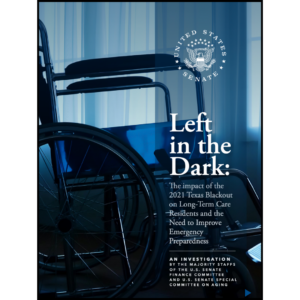Spring into safety
Right now, I’m in the middle of spring cleaning. It’s a deep cleaning and not much fun. On the other hand, when the work is completed, there’s a satisfaction to knowing that filters and batteries in protection devices are changed, carpets are clean and the dirt and debris are out of the picture—at least for a while.
Owning and operating a long-term care (LTC) facility is expensive. Staffing and maintaining that facility is expensive, too. And for residents, living in a facility is expensive. With all this expense, is it any wonder that LTC providers balk at government regulations on federal, state, county or city levels. To slow down the rate of scrutiny and regulation on safety matters, an ounce of prevention is worth a mountain of insurance claims and government regulation. Keeping a facility in top shape is smart business.
When visitors and prospects enter, do they just see a surface clean building? Or can you assure them that it’s not only visibly clean and safe, but that every effort is made to protect their loved ones from harm? Fire, smoke and carbon monoxide poisoning are a few of the dangers that threaten residents and property.
Spring is the perfect time to inspect, repair, install or improve the systems that keep the building safe—and healthy, too.
Maintenance
Heating systems worked hard this past winter across most of the country. A seasonal inspection can prevent major repairs or replacement. Fire-suppression systems benefit from this seasonal checkup, too.
The simplest, and probably most inexpensive, item on a maintenance checklist is to make sure fire, smoke and carbon monoxide (CO) detectors are in good shape and have fresh batteries.
Does the facility run on fossil fuel? Called “the invisible killer,” carbon monoxide is odorless, colorless and tasteless. Inhalation can cause illness or death because it mixes with blood and prevents oxygen absorption.
In the laundry or the kitchen, it’s a great time to inspect and replace worn hoses or address any leaks to prevent the costly damages caused by flooding or fire.
Check out the air ducts. If they need to be cleaned, this is a great time to do it. Many residents—and even staff—suffer from allergies, and removing dust and dirt from the air helps to alleviate respiratory stress.
Go outside and take a walk around the grounds. Some problems that might need to be addressed are uneven sidewalks that can lead to trips, falls or litigation. Are benches seated on the ground securely? I’ve visited some facilities situated on park-like settings with picnic tables and grills. Take time to inspect the grills for any damage.
Finally, on your outside inspection, inspect the vegetation. Are shrubs too close to the building? Are there any cracks in the foundation, or are loading docks directly exposed to the outdoors? All these areas can be an invitation to a pest infestation. If necessary, fix these problems now or consult a pest control professional.
Housekeeping
Although maintenance staff members are busy inspecting and correcting issues that members of the public don’t see or think about, the services you provide are apparent to anyone who steps through the door. In a recent blog for Long-Term Living, nursing home resident Kathleen Mears wrote about how her room was cleaned—from painting to washing floors to wiping down beds.
Not only does this exercise improve a resident’s state of mind, it is an excellent way to make sure that beds, chairs and wheelchairs are in perfect working order. By inspecting mattresses, worn and unsafe support surfaces can be replaced. It’s also a perfect time to make sure that your residents live—and sleep—in a bedbug-free environment.
Although the public might not appreciate the hard work, this is a good time to clean and refresh cupboards and storage areas around the facility, discarding worn or out-of-date items (especially in the kitchen).
Final thoughts
Safety is everyone’s job. Reporting a spill or leak can prevent a fall. Smell smoke? Report it immediately, and train everyone how to operate a fire extinguisher. As I think about washing the walls in my home, I realize deep inspection and cleaning is a lot of work—teamwork. But the satisfaction of knowing your staff and residents work and live in a well-tuned facility makes the effort worthwhile.

Sandra Hoban was on I Advance Senior Care / Long-Term Living’s editorial staff for 17 years. She is one of the country’s longest-serving senior care journalists. Before joining Long-Term Living, she was a member of the promotions department at Advanstar Communications. In addition to her editorial experience, Sandi has served past roles in print and broadcast advertising as a traffic and talent coordinator.
Related Articles
Topics: Disaster Preparedness , Facility management , Operations , Risk Management











